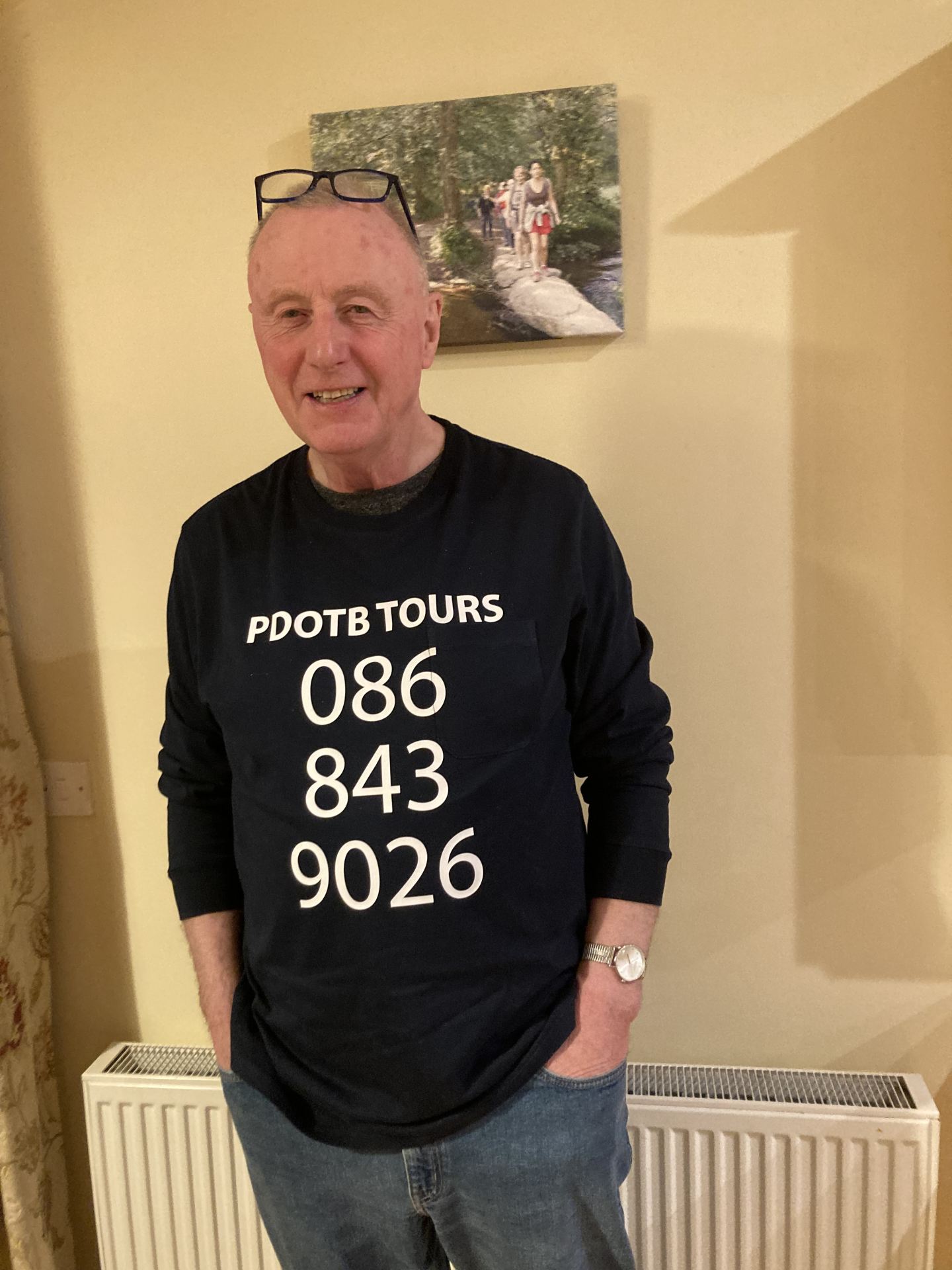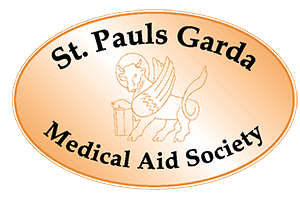Watch this video of Neil Welch, Senior Strength & Conditioning Coach and Head of Lab services at SSC, presenting on ‘Enhancing Recovery From Knee Replacement‘.
This video was recorded as a part of SSC’s Online Public Information Meeting, focusing on Knee Arthritis.

Dr Neil Welch is a Senior Strength & Conditioning Coach and Head of Lab Services in SSC’s Sports and Exercise Medicine Department.
Hi there, everyone. My name is Neil Welch. I’m the head of the UPMC Sports Surgery Clinics and Lab Services within the Sports Medicine Department.
I want to start off by saying thank you to everyone taking time out of their day to watch this presentation on a Tuesday evening or watch it later.
I want to talk to you today about enhancing recovery from Knee Replacement surgery.
Why do we need Knee Replacements?
Osteoarthritis is a scourge that affects a large number of people all over the world. As we can see here, around 250 million people worldwide are impacted. Those most susceptible are obese, patients over sixty-five years of age and, in particular, females. About 35% of females over sixty-five suffer from some form of Osteoarthritis.
From a population perspective, given the ageing population that we have in Ireland and the growing sedentary lifestyles and obesity levels within the population, this means it’s a condition that we’ll have to get used to dealing with.
So, in particular, Knee Arthritis. We often hear the term wear and tear used, and this is a point echoed by Brian this evening as well. Knee Osteoarthritis is not just a wear and tear condition.
The important point here is that we tend to treat our body differently if we feel wear and tear is a big driving factor. It conjures up imagery of sandpaper wearing away wood, and that’s not how these conditions work, as a large inflammatory component also sits within osteoarthritis as well.
There are multiple factors that are thought to contribute to the changes in the joints. Trauma is one. So we know that following certain surgical interventions earlier in life increases the risk of knee Osteoarthritis.
Mechanical forces play a role. Simply it is the amount we do, but also the other factors such as inflammation, which is where obesity plays a role and biochemical reactions within the body.
Changes within the joint fluid itself and then also the metabolic changes that we might go through, changes in activity levels and hormonal changes throughout our life.
So there are lots of contributing factors to this condition.
What does knee osteoarthritis look like?
What does it look like? So this is a photo from within the knee. The curved shape at the top of that circle is the end of the cycle, and the bottom is the Cartilage that sits on top of your shin. This is what it looks like in very good condition.
Now, the next image I’m going to show is the other end of the spectrum, and there’s a whole scale of changes that happen within the knee joint between here. I don’t want everyone thinking just because they have a sore knee that their knee looks like this.
But essentially, this is what Osteoarthritis is. It’s a change or a death in the Cartilage cells within the Knee. That can either happen, as I said, because of trauma or the change in the fluid around the knee that causes the cells to die throughout our lifetime. Okay, So not every knee that is sore looks like the ones on the right.
Oftentimes, we can have changes within the knee joint that don’t result in pain. That’s why it’s not as simple as just simply scanning the knee.
We can now start to see what the changes look like within the joints. In order to go from one end to the other and get to a position where we’re considering knee replacements, we have changes in our physiology, and we have changed within our function.
So from a physiological perspective, we will lose the size and strength of the muscle because of pain. These are in the background to what we see change throughout our lifetime as well.
This image is of a thigh. The white banding around the outsides is fat that sits beneath the skin, and the dark grey images are of the muscles within the leg. This is what a strong well-conditioned leg looks like in our 20s’.
This is the same leg 30 years later. What we can see here is how lifestyle changes can impact us. We see that the banding of fat increases as we have a larger layer of fat underneath the skin, and we can see this marbling occur in the darker area of the muscle. That’s called Intramuscular Fat Infiltration.
The muscle becomes deconditioned, and we get layers of fat and fatty deposits within the muscle. This can change the way that we use the muscle – we get weaker essentially, and we can’t send a signal to the muscle as clearly through our nerves, but it’s also a large storage site for inflammatory metabolites, and that’s where the relationship with inflammation starts.
In the background, we have pain and change in function, we also have these lifestyle changes that we get throughout our body throughout a lifetime as well.
In terms of Knee Replacement, 95% of Knee Replacements happen because of Osteoarthritic changes in the joints. However, not everyone who has Knee Osteoarthritis has to have a Knee Replacement.
In the UK, there are 100,000 Knee Replacements completed each year and 700,000 in the US. Obviously, we can extrapolate those numbers down a little bit within Ireland.
In terms of selection criteria, patients would be undergoing moderate and severe pain over a long period of time and then associated loss of function. So we have changes in the quality of life and the ability to use the leg and haven’t responded to non-surgical treatment. Brian covers the conservative treatment elements within his presentation.
We also know from the larger registry papers around these Knee Replacements that 15 to 20% of people are dissatisfied with the outcome. Sometimes that can be a mismatch of perceptions. People expect to be coming out the other side of the surgery like the $6 Million Man and then not quite feeling that way when they have surgery.
It’s something we’re looking to try and get to the bottom of within the UPMC Sports Surgery Clinic is some of the reasons why people might be dissatisfied. Can we improve those outcomes?
At UPMC Sports Surgery Clinic, we completed 1385 knee replacements last year. We’ll be completing more of them throughout this year. We’re a centre that sees a lot of this type of surgery.
The average age of patients is 68 years old, although we have a range from 48 to 86. Those younger cohorts are starting to grow. I think this is partly due to those lifestyle changes or the increase in sedentary lifestyles and growing obesity in populations that we see.
What happens when I have a knee replacement at SSC?
What would happen if you had a Knee Replacement in the clinic? You’d be staying for two or three days following the surgery. This depends partly on your surgeon’s preference and how you respond to the following surgery. It might be a surprise to some of you that you’re out so quickly.
It’s important for a mind-set perspective to understand that you are not a very sick or critically ill patient when you’re undergoing replacements. That kind of mind-set is also important for your rehabilitation so you will be on your feet and out as soon as you are able.
On your first day following surgery, we will be working on your mobility, trying to get some movements into the Knee. The physiotherapist will show you your home exercise plan and how to use your crutches. You will be up on your feet on day one.
On day two, we will talk you through your exercise progressions, we will look at how to improve your use of crutches and then how to improve your gait on crutches and then stair use. Depending on your progression, this will be done on day two or three.
In terms of going home, you are looking for a 90-degree knee bend and moving independently with crutches. You can use stairs and can perform a straight leg raise. Then it’s on for physiotherapy.
Now I said before about changes in muscle mass throughout our lifetime and obviously throughout pain prior to surgery. We also have to take into account the surgery itself. The two pink circles up here, a slice, an MRI slice of a thigh, we have on the left-hand side before surgery and two weeks after surgery.
If you look at the areas specifically highlighted by this oval shape here, we can see the changes in muscle mass even as quickly as two weeks following the surgery, and the images below of the non-operated leg and even then, we can see a reduction in size. That’s simply because of the increase in rest periods due to the surgery and shows the inflammatory response to the surgery itself.
This is asked to play a role when we’re talking about rehabilitation. Over the longer term, in the first couple of days following surgery, we’re looking to restore your range of motion. We’re looking to try and build up the size and strength of the muscles around the quads in particular. While the muscles are affected, the hamstrings and the calf are as well, and we’re looking to restore their function.
We want you to use your leg the same as the opposite side and the same as we did before we started having these issues. I mentioned before about 15 to 20% of people have issues over the long term or are dissatisfied with surgery. One of the possible reasons for this is incomplete rehabilitation as well, and I’ll touch on that shortly. The aim is to get to a stage with a physiotherapist where you’re mobile, you can walk and then be shown the door again. I’ll talk you through those issues. For example, Poor pre-surgery condition, so not being yourself in the best possible way. You need to be in a healthy condition for surgery in order to give you a chance of a positive outcome.
I’m going to side with long-term guided movement patterns, changing how you use your leg to protect the Knee. This can be quite hard to change. If you are looking to restore movement patterns, you will look to do it if you were exposed to increased hypersensitivity to pain again. When you experience pain over the long term, your body actually gets better at sensing it and reducing that pain.
Sensitivity over the long term can sometimes take a long time. Then the decision-making for surgery, people figure out that it’s much too much work to carry out because of the kind of injury I mentioned before about patients who had incomplete rehabilitation. We’re looking at an image of strength measurements of someone’s thigh throughout the course. This is four and a half months post-surgery. When the patient had been discharged from their physio, they were back playing golf and walking. They were getting some aching in the knee but wanted to come in and just make sure they were in a really good position.
The red line on that graph is the strength of the right leg, the non-operated leg and the grey line is the strength of the operated leg. And if you look at the bar charts on the dates and we will look at the lines next to where it says Peak, that red leg gets a score of 131% bodyweight strength and quite a good score from somebody who is 65, but the operated leg is 73%, so that’s a 45% difference, and this is a patient who’s been discharged from care.
Again, if I’m putting myself in that position and I want to make sure that I have a much smaller difference between legs, my number one goal is to try to return to my day-to-day life. Many people want to be very active in Knee Replacement and what we looked at to try and do in the sports injury clinic is improve outcomes.
Joint Lab is a project we’ve been working on. For one, we’re looking to launch Autumn Winter this year in order to try and help improve patient outcomes and reduce the 15 to 20% dissatisfaction that we see broadly. It’s off the back of our ACL service and ACL surgery, one you have following a traumatic injury playing field sports, and we’ve been conducting research and review services for almost a decade.
We’ve had thousands of patients with the data come through with over 15 scientific publications around us. If you read the literature around an injury, you’ll see this is a 20 to 25% screen upgrade. People go on to be injured for those patients who come through the research program or the review service and have the surgery with the excellent surgeons here at the sports surgery clinic, that re-rupture rate is about 2%. So we’re looking to try and do a joint map to see if we can do the same thing and understand what the important elements related to your rehabilitation for any of those are.
We are going to do that using a number of different tests. We’ve leaned heavily on biomechanical assessments. In this image here, you can see the mark is attached to this individual. We use that to get measurements of the way you walk, the way you set the stance and the way you step up and over stairs and before and after surgery.
The idea is to try and identify the important factors for you to work on in your rehabilitation. We do this, rather than just looking at you, to get biomechanical information that we can use to identify the important areas.
You can see quite clearly this patient is limping following the testing, but again, we imagine this is somebody four, five, or six months after their surgery, and we haven’t restored full function for them. Similarly, you see this patient getting up and down from the side on the citizen task. It might look normal, but when we spin around and look at the front, we can see this patient is clearly putting more weight through the non-operated leg on the left-hand side.
What we’re looking to try and do is put numbers on there so we can identify whether or not somebody is improving throughout the rehabilitation. This is to be able to look at activity levels and see whether the amounts of steps we have taken immediately following surgery play a role in a positive outcome. Then next to that is biomechanical testing which would be looking at the quad and hamstring strength, plus inflammatory markers and body composition, again, hoping to identify those who might respond better or worse to surgery so we can improve surgical decision-making to improve pre-surgery strategies for training before going into surgery, and then better guiding rehabilitation following surgery.
I’d like to thank you for your time. Thank you for listening. Hopefully, you found it informative.
Would cycling be beneficial as a non-weight-bearing exercise and good preparation for a Knee Replacement?
Cycling is excellent preparation for a couple of reasons. One, it keeps the quads very active. As I mentioned in my talk, that’s a sight of muscle loss which is a really good reason for continuing on with the bike. Brian alluded to it in his talk as well. I think it’s a really important point around weight loss. Even just weight gain throughout the preparation phase as well. Performing some form of cardiovascular exercise, something where you get out of breath, is really important for not putting weight on. I think that’s also important and helps maintain your range of motion. So 100% get behind cycling.
Suppose a person has back issues, like a disc. It sounds like they may have a sciatic nerve problem. Is it a good idea to proceed with the Knee Replacement?
I think there are a couple of factors that you need to consider here. One of them is obviously which is a priority, and addressing that first. If you’re having more of an issue with sciatica-related back pain, you really want to get that sorted first and then also the impact it might have on the rehabilitation. Again, if you have a compression of a nerve, sometimes it can impact the way the muscles recruit down the rest of the leg. That might slow down your rehabilitation as well. A few things to consider are definitely getting a back checked out beforehand to see if there’s anything that can be done to put them in a better position before surgery and before maybe going ahead with the Knee Replacement.
When patients have had a Knee Replacement, is it okay to continue to exercise when the Knee is swollen because it does stay swollen afterwards for a while?
Yes, a lot of exercises are going to be important in order to be able to help mobilize the joints, and Physiotherapists will be able to give good advice on how to improve your range of motion. Ideally, you’re looking for exercise that doesn’t cause more swelling, but anything that you mobilize the joint, you get it moving should make it feel a little bit better afterwards. But certainly, you want to be kind of cautious not to increase the level of inflammation afterwards.
I have been told I have a bit of arthritis is there any vitamins I can take to help?
It’s more the concern around Osteoarthritis, it is a diagnosis we tag on images of the knee on a scan, but everyone has changes in a joint, the vast majority of people who show up as having some form of Osteoarthritis don’t experience pain at all. It is important that she doesn’t overly worry about it. A change within a knee joint is normal. In terms of prevention, maintaining a well-balanced diet, reducing inflammation in the joint by conducting cardiovascular activities, and limiting drinking and smoking also. For normal bone health in the winter months, the Introduction of vitamin D.
How important is Physio after a Knee Arthroscopy?
It is a much quicker rehab, the surgery is much less invasive. A lot of the time, physiotherapy after that surgery is to undo what happened as a result of the injury beforehand; the likelihood would be there would have been a lot of knee soreness before surgery, and you would’ve lost the size and strength of the muscle around the knee. It is not a major concern after the operation because getting the range of motion back is relatively straightforward, but you will need the advice to get the muscle strength and size back up. I would say it is important following surgery, yes.
If both knees require partial replacement, is it a good idea to have them done at the same time?
I think this is a challenging one. It’s kind of something to kind of talk over with your surgeon and the pros and cons of having both done obviously from a recovery perspective; you’re not going down the line of doing rehab on one and then staring down the barrel of another, say, six months of rehab on the other one. So while it might be worse at the beginning, kind of like having twins, I guess, is to make it a little bit easier in the longer run, I’d say.
Can you still experience Arthritic pain in the Knee after a Knee Replacement? If not, what’s constant Arthritic-like pain in an operated Knee indicate?
The pain that you feel isn’t necessarily down to that, and when we talk about Osteoarthritis, it’s the change in the joints because the joints have resurfaced. It’s unlikely to be related to the condition of the joint’s surfaces, but the pain has many inputs, and it comes from many different sources. Sometimes when you’ve had pain in a joint over a long period of time, you just have heightened sensitivity within that joint, and it takes a long time for that sensitivity to reduce, particularly if it’s been something that’s been playing on your mind over a really long period of time. I talked about the guarding movement patterns within my talk. Those are something that can remain over a long period of time. You could continue limping for 12 months after if you know you’ve had the replacement and not simply because it’s sore. A lot of that can be driven by pain. So pain following the surgery is quite common, and it takes quite a while before it reduces fully.
How do you access the Joint lab?
It’s through referral. If you speak to your surgeon, they will refer you in, and the idea is we organise your pre-surgery appointments at the same time as you have your pre-assessment clinic. You then come over to us in Sports Medicine, and then in six months, you have a follow-up.
What role does a scan have in determining the state of a knee joint and muscle condition to perform an intervention?
Scan less for the muscle, a scan would be done routinely before a knee replacement. A lot of this is done by me to see if the muscle size is reduced compared to the non-sore leg and strength testing so you can determine if there is a big difference in strength and condition of muscle you don’t necessarily need the MRI to tell you that. In terms of scans of the joints, in particular joint replacements, the surgeons rely more on the X-ray side of things, but an MRI scan can tell you if there is a degenerative change in the joint as well. It is not something you’d necessarily do unless you had an issue specifically.
How long after having one Knee Replacement, will they have them staged? How long should they wait to get the second one done?
Again, there are lots of factors that kind of contribute to this. Logistics is one. Often, it depends on what time of year, how it fits around people’s lifestyles, work, holidays, and all that sort of stuff become factors in how the recovery goes. You might feel after having the first one done that you might want to kick it down the road a little bit longer just because the recovery takes a while. It’s a good bit of work, too, from a rehab perspective. But if you are staging them, you want to make sure you’re functioning on the other ones. A good few months would pass, and pain would be reduced and just so you can say, when you rehab on the other side, you’re going to put a lot of weight on to the first operated leg. So you want to make sure that it’s in good condition to be able to take on that workload for you.
Stairs are to be avoided when dealing with pain and swelling in the knee. Or does this help to strengthen the leg in general?
Well, not necessarily just because of functionality. You can’t avoid them, particularly in the house. It’s not that they make things worse. It’s, as I said before, like relating to wear and tear. You’re not going to be necessarily creating a bigger problem; although it’s uncomfortable, you might be able to find ways around that. There are techniques where if you come downstairs leaning forward a little bit more to offload the knee joints, well, I wouldn’t necessarily say avoid it. Obviously, it’s easier for me to say when you experience some pain going up and down. So there’s no physical reason to have to.
How long should you continue exercise after Knee Replacement?
You are probably speaking to the wrong person because you should probably continue exercising throughout your lifetime. Yeah, exactly. There is a point where it’s like maintaining functions of our life, we should be performing some form of cardiovascular exercise regularly. Some sort of exercise to get out of breath three or four times a week. We should be performing some resistance training two times a week where the muscles are challenged. If we do that, we maintain a function, look after our joints, look after the size of the muscles, and slow down many changes that happen throughout our lifetime. In terms of rehab, to me, it’s getting symmetry, getting the size and strength back in the muscles in terms of looking after yourself over the long term that’s a lifetime commitment to me.
Should you rest after getting a joint injection into the knee, and if so, for how long?
Everyone has different protocols for this and different protocols depending on the type of injection normally, it is a couple of days, but the individual doctor will give you guidance.
When is the time when replacement is necessary?
Normally, you want to be in a really bad way before you have the Knee Replacement because it won’t necessarily bring you back to 100% now. You want to make sure it’s sort of you feel the improvement from it, and it’s very different for everyone. It depends on how much it impacts your quality of life, sleep, and mobility; these all play a role in it and, obviously, the condition of the joints themselves. That’s a conversation you tend to have with the Orthopaedic surgeon to see when they think the ideal timing is. It’s very individual, and everyone’s kind of perception of how it impacts them is different. Again, it is hard to be very specific.
If someone said they had a Knee Replacement in January two years ago, and they’re still getting pain. On the good leg, on the upper thigh, they also have a bit of wear and tear in that good leg as well. They’re now 52. What should they be doing now?
I’d see a physio. Just to try to understand what’s going on. If it’s in the thigh close to the knee, then you think it’s a little bit more to do with the muscles of the tendons, which is good news because that response tends to respond very well to exercise and to do physiotherapy. I’d explore that; it might just be that there’s still a little difference between legs, and they’re using that leg a little more. It might simply be an overload issue, but a couple of physiotherapy sessions should help them get on top of that.
| For further information on Total Knee Replacement, please email [email protected]. |








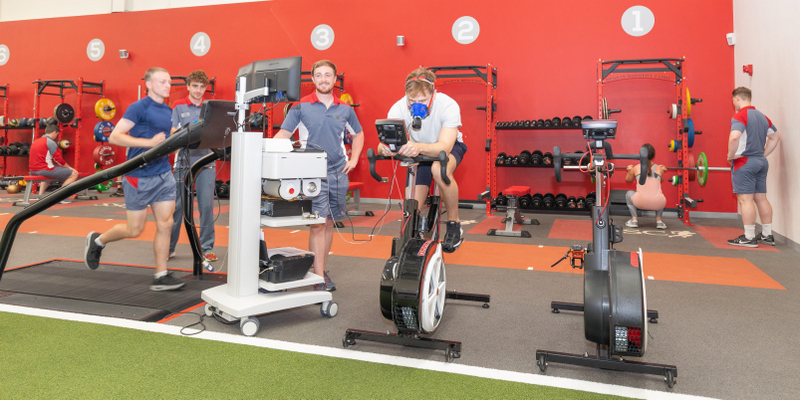
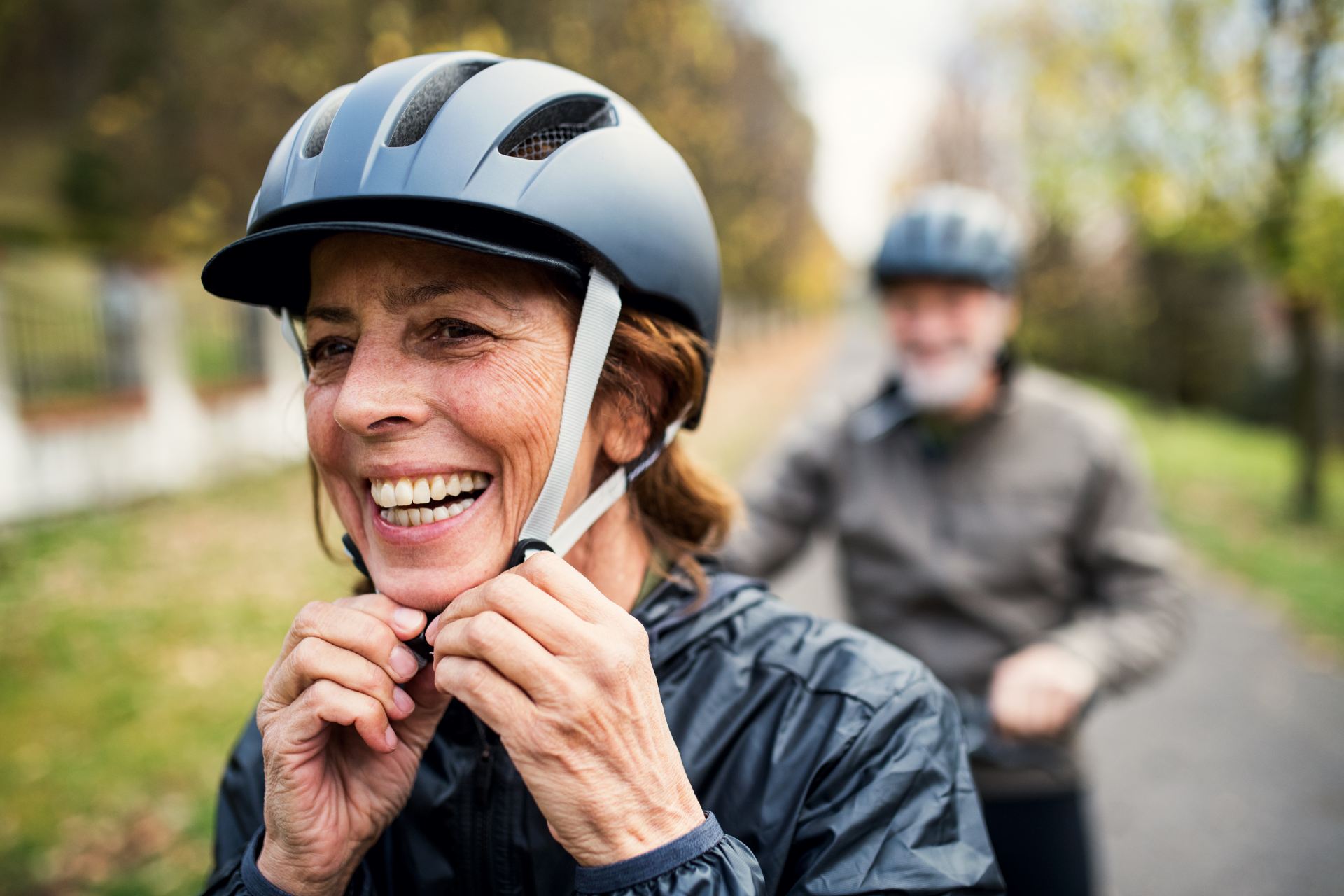


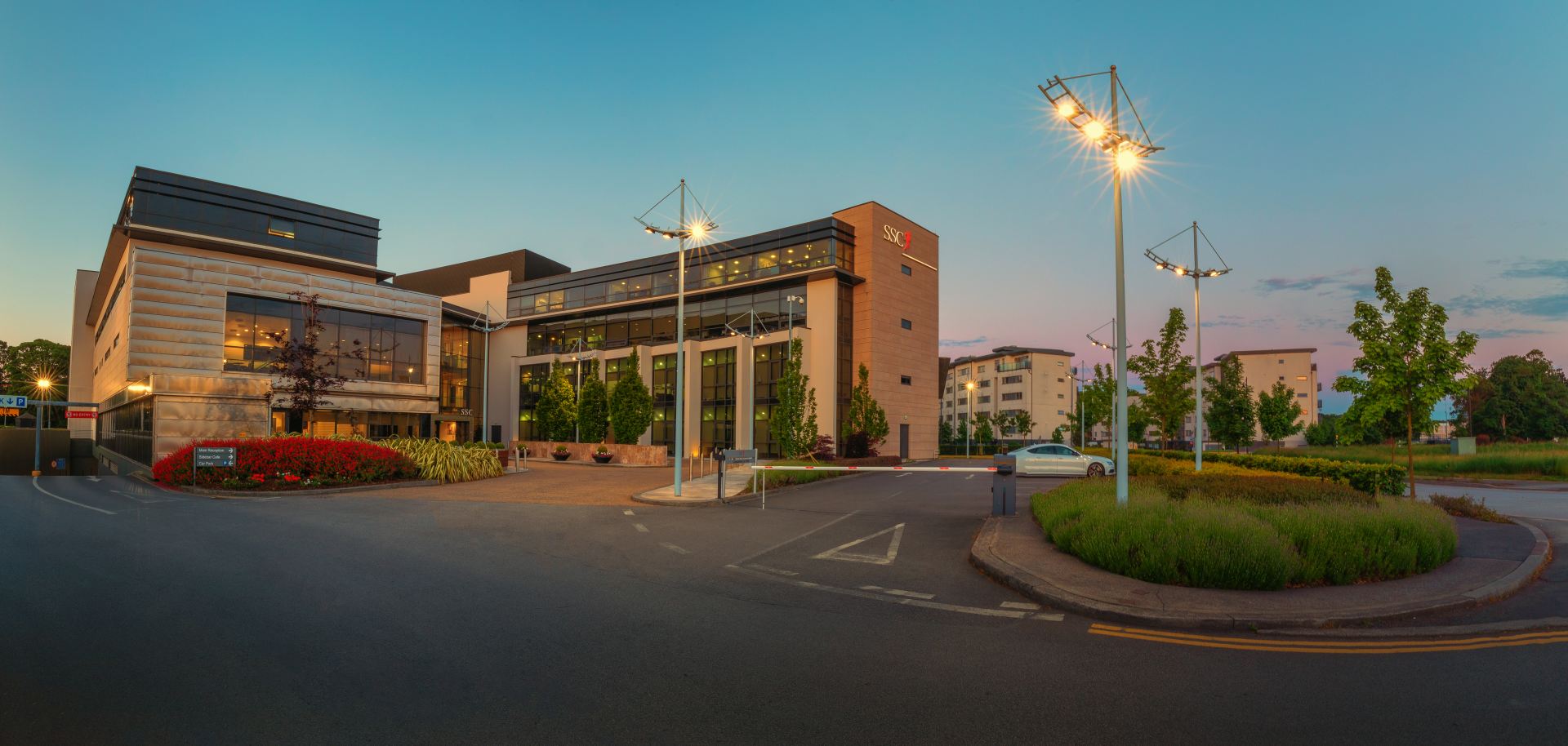

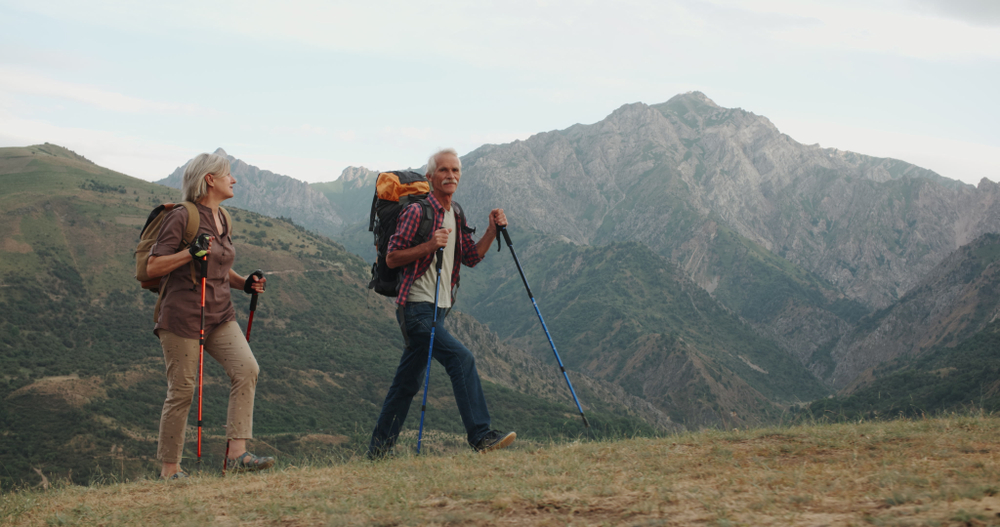
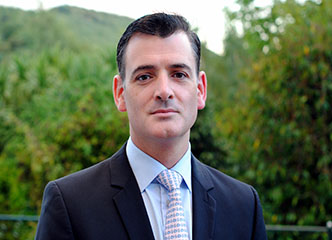 Mr James Walsh
Mr James Walsh 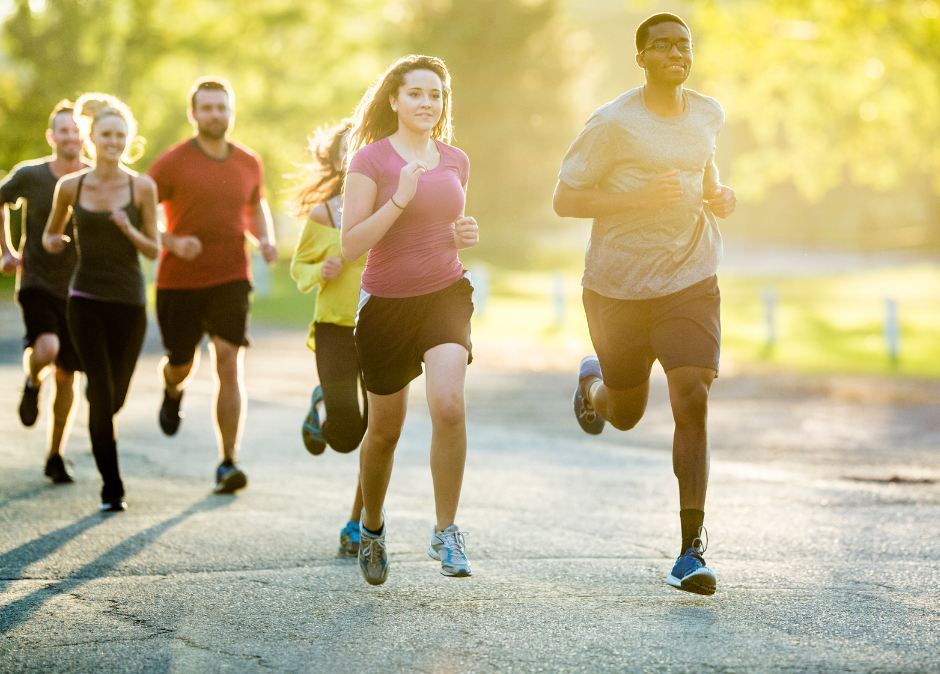
 David McCrea
David McCrea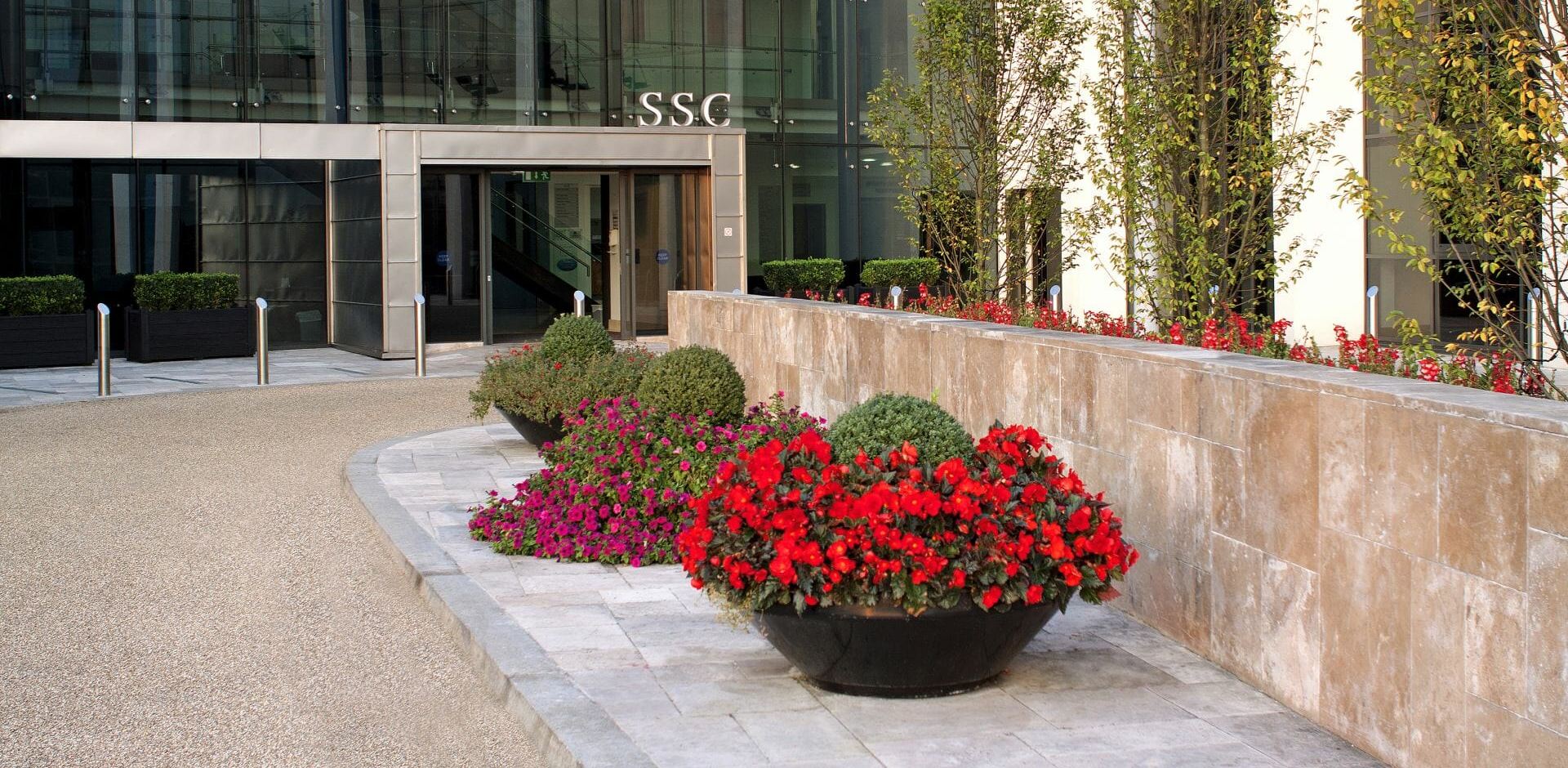
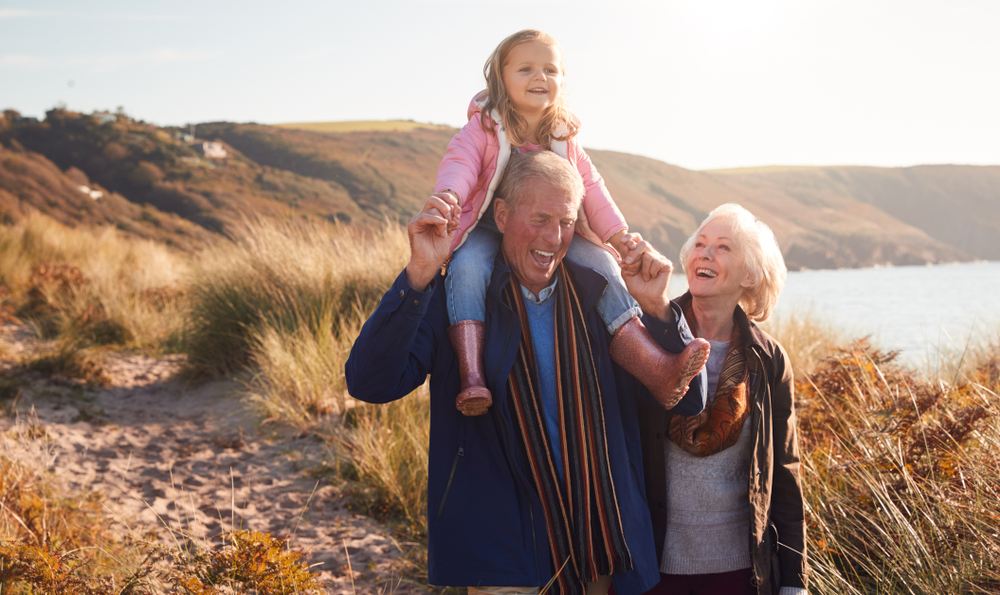
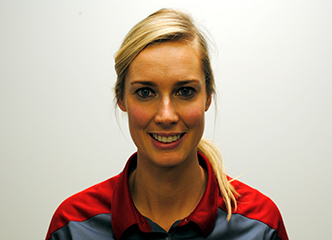 Edel Fanning is a Lead
Edel Fanning is a Lead 